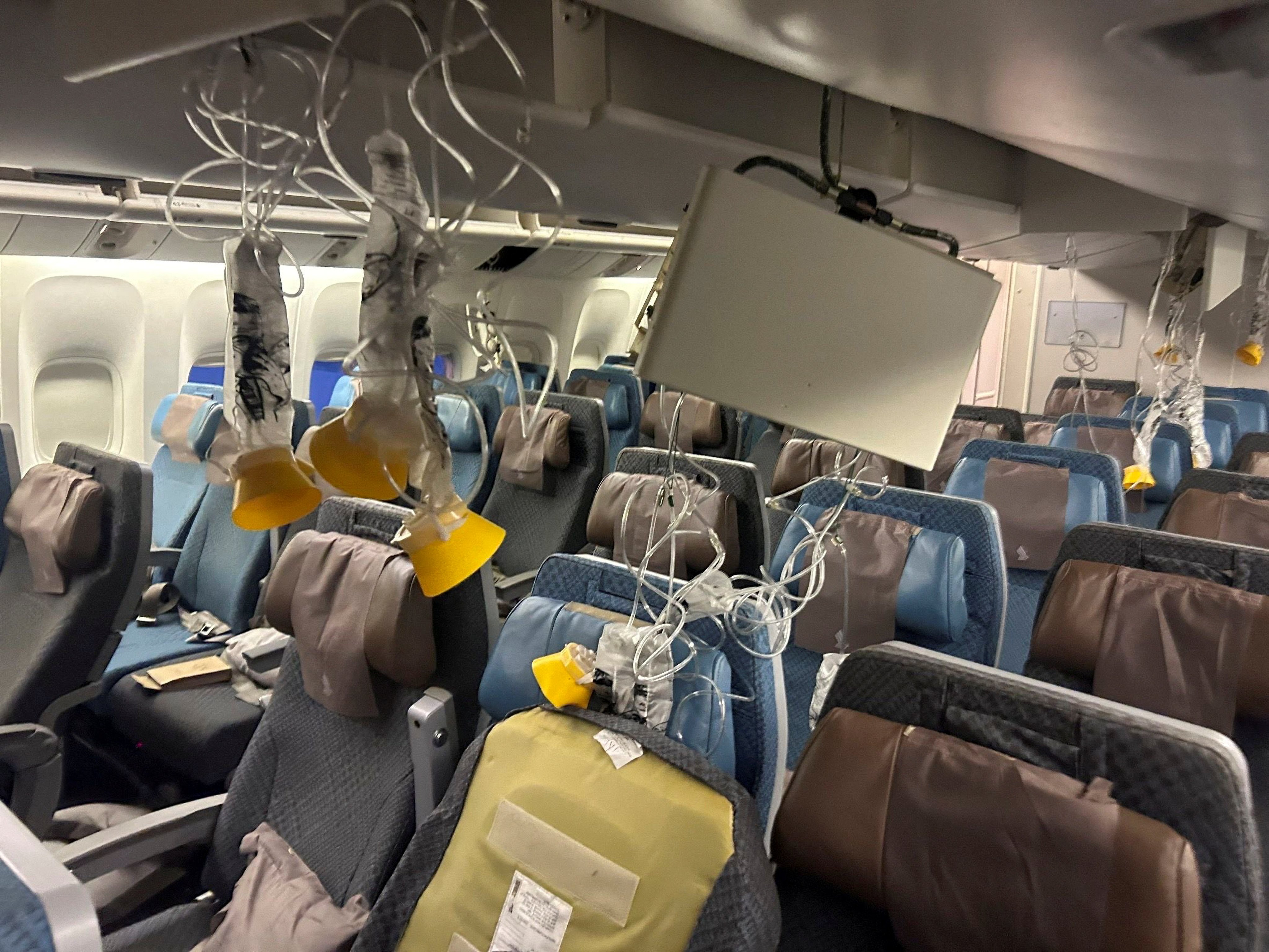


Preliminary findings by TSIB on a turbulence hit Singapore Airlines flight last week showed a rapid change in gravitational force and a 54 meter altitude drop caused injuries.
During the turbulence, the pilots disengaged the autopilot and manually controlled the aircraft for 21 seconds to stabilise it.
One passenger died of a suspected heart attack and dozens were injured after Flight SQ321 encountered extreme turbulence.
Last week, Singapore Airlines Flight SQ321, operating from London Heathrow Airport (LHR) to Singapore Changi Airport (SIN), suffered severe turbulence while cruising at an altitude of 37,000 feet over Myanmar.
Preliminary findings released Wednesday by Singapore's Transport Safety Investigation Bureau (TSIB) provide some details of the incident, revealing the unexpected and violent nature of the turbulence and its consequences on occupants and the asset.
On May 21, Flight SQ321, a Boeing 777-300ER carrying 211 passengers and 18 crew members, encountered unexpected and extreme turbulence. This sudden turbulence resulted in one death, with a passenger suspected of suffering a heart attack, and numerous injuries among those on board.

The London-Singapore flight diverted to Bangkok for an emergency landing after the plane was buffeted by turbulence that flung passengers and crew around the cabin, slamming some into the ceiling.
The Singapore transport ministry, citing a report by the Transport Safety Investigation Bureau of Singapore, said in a statement :
"The aircraft experienced a rapid change in G (gravitational force). This likely resulted in the occupants who were not belted up to become airborne."
According to the TSIB findings, Flight SQ321 departed from London on May 20 and maintained a normal flight path until the turbulence incident.
The preliminary investigation results read that the gravitational force (G-force) fluctuated between +0.44G and +1.57G over 19 seconds, causing initial vibrations. It said,
“The aircraft experienced a rapid change in G (gravitational force) ... This likely resulted in the occupants who were not belted up to become airborne.”
The aircraft experienced an uncommanded altitude increase to 37,362 feet, likely due to an updraft. The autopilot attempted to correct this by pitching the aircraft down, and the pilots managed an uncommanded airspeed increase by extending the speed brakes.
The report further added that,
"The vertical acceleration changed from negative 1.5G to positive 1.5G within 4 seconds. This likely resulted in the occupants who were airborne to fall back down."
"The rapid changes in G over the 4.6 seconds duration resulted in an altitude drop of 178 ft (54 m), from 37,362 ft to 37,184 ft. This sequence of events likely caused the injuries to the crew and passengers."
The crew played a major role to calm the situation down and resulted a safe landing of the aircraft. During the turbulence, the pilots disengaged the autopilot and manually controlled the aircraft for 21 seconds to stabilise it.
As per the report, Cockpit re-engaged the autopilot at 07:50:05 UTC and the aircraft returned to its cruising altitude of 37,000 feet by 07:50:23 UTC.
After assessing the injuries and the severity of the situation, the pilots diverted the aircraft to Suvarnabhumi Airport in Bangkok.
The aircraft began a controlled descent at 08:06 UTC and landed safely at 08:45 UTC without encountering further severe turbulence. They coordinated with air traffic control to ensure medical services were ready upon landing.
The violent turbulence resulted in several injuries among passengers and crew members. The sudden shifts in G-force and altitude threw unsecured individuals against the cabin structure, causing severe trauma. Tragically, one passenger suffered a suspected heart attack and could not be revived.
Weather condition in airspace has affected air transportation big time these days, after sSingapore Airlines incident, the other day, a Qatar Airways Boeing 787-9 Dreamliner aircraft (A7-BHM) that originated from Doha, landed at the Dublin Airport shortly before 1 p.m. and was met by emergency services after six passengers and six crew members reported injuries.
The latest incident prompted questions about turbulence and whether customers should anticipate more of it due to stronger jet stream winds driven by climate change.
For the Singapore Airlines case, the TSIB, in collaboration with the National Transportation Safety Board (NTSB), the Federal Aviation Administration (FAA), and Boeing, continues to investigate the incident.
Data from the flight data recorder (FDR) and cockpit voice recorder (CVR) have been analysed to compile a detailed chronology of the event.
“On behalf of Singapore Airlines, I would like to express my deepest condolences to the family and loved ones of the deceased passenger,” Singapore Airlines’ CEO, Goh Choon, Phong said in a Facebook post.
“We also deeply apologise for the trauma experienced by all passengers and crew members on this flight.”
Even though no direct involvement on the probable causes of the incident, Boeing, the manufacturer of the equipment, said it was in contact with Singapore Airlines about the flight and was ready to offer support.
You may like to read.....
